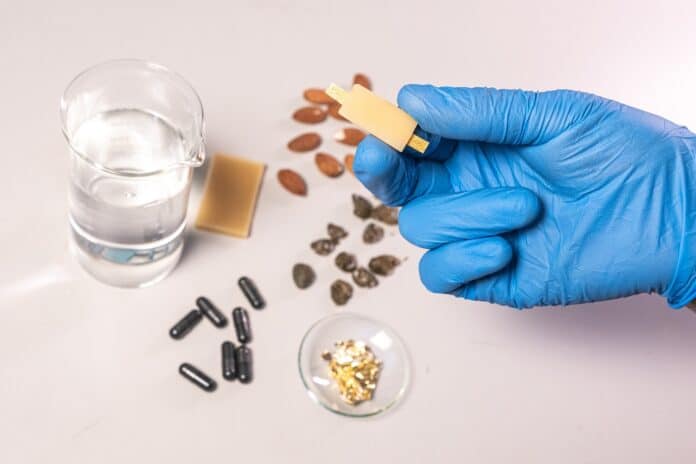Edible electronics is a growing field that could have a great impact on the diagnosis and treatment of gastrointestinal tract diseases, as well as on food quality monitoring. One of the most interesting challenges in the development of future edible electronic systems is to realize edible power sources.
Now, a team of researchers at the Istituto Italiano di Tecnologia (IIT-Italian Institute of Technology) has created a totally edible and rechargeable battery using materials that are normally consumed as part of our daily diet.
Researchers took inspiration from the biochemical redox reactions that happen in all living beings to develop a battery that utilizes riboflavin (vitamin B2) as an anode and quercetin (a food supplement and ingredient) as a cathode. Activated charcoal was used to increase electrical conductivity, while the electrolyte was water-based. Also, nori seaweed, the kind found in sushi, was used to make the separator needed in every battery to avoid short circuits. Then, electrodes were encapsulated in beeswax from which two food-grade gold contacts on cellulose-derived support.
When ingested, the proof-of-concept battery cell operates at 0.65 V, a voltage low enough not to create problems in the human body. It can provide a current of 48 μA for 12 minutes or a few microamps for more than an hour, enough to supply power to small electronic devices, such as low-power LEDs, for a limited time.
This fully edible rechargeable battery concept would open the doors to new edible electronic applications, enabling safer and easier medical diagnostics, treatments, and unexplored ways to monitor food quality.
“Future potential uses range from edible circuits and sensors that can monitor health conditions to the powering of sensors for monitoring food storage conditions,” pointed out the research coordinator Mario Caironi. “Moreover, given the level of safety of these batteries, they could be used in children’s toys, where there is a high risk of ingestion. Actually, we are already developing devices with greater capacity and reducing the overall size. These developments will be tested in the future also for powering edible soft robots.”
“This edible battery is also very interesting for the energy storage community. Building safer batteries without the usage of toxic materials is a challenge we face as battery demand soars. While our edible batteries won’t power electric cars, they are proof that batteries can be made from safer materials than current Li-ion batteries. We believe they will inspire other scientists to build safer batteries for a truly sustainable future”, added Ivan Ilic, coauthor of the study.
Journal reference:
- Ivan K. Ilic, Valerio Galli, Leonardo Lamanna, Pietro Cataldi, Lea Pasquale, Valerio F. Annese, Athanassia Athanassiou, Mario Caironi. An Edible Rechargeable Battery. Advanced Materials, 2023; DOI: 10.1002/adma.202211400
